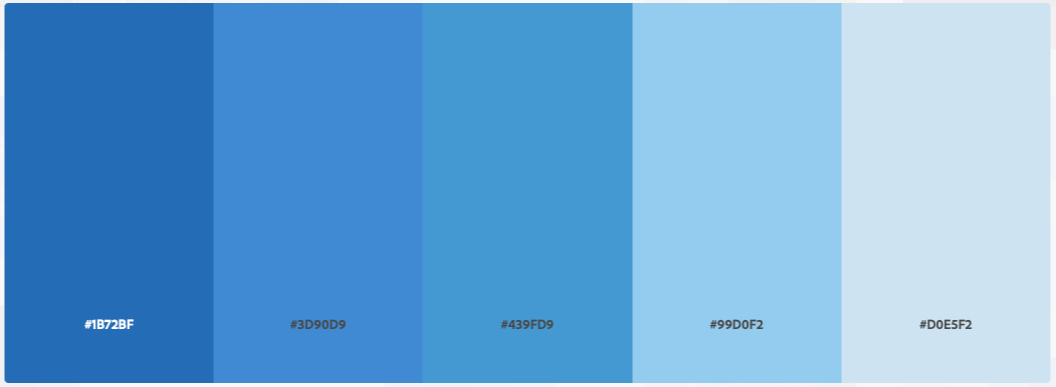The bold traveler. The Explorer brand archetype set out for uncharted waters, not necessarily hoping for adventure. It’s more that they must answer the call to see what’s out there. They have a deep love of discovering new places, things, or people. They can be prone to perfectionism in that they’re never satisfied.

The Explorer Brand Archetype
The explorer brand lives for adventure. Or, more precisely, they exist to help their customers go on adventures, express themselves or find self-actualization. They’re all about freedom and individualism. They want to discover all there is to discover. These brands are ambitious and they often keep their fans engaged by announcing new initiatives, programs or plans.
Brand Promise: Freedom
Goal: To find fulfillment.
Strategy: To experience all there is to experience.
Personality to project: The seeker, the trailblazer.
Ideal Customer: These consumers value freedom of expression and trailblazing, and they feel loyal to brands that display these characteristics. Explorers tend to be risk takers, so they value ads that take risks too. They tend to sit up and take notice when presented with new stimuli.
Weakness: These brands can be perceived as reckless or as encouraging questionable activities, and they may be perceived as flaky.
Suggested Color Palette
This is just a suggested palette. Colors should be selected based on a robust brand strategy and should be part of the brand identity development.


JEEP

Jeep is the quintessential explorer brand. Notice how neatly aligned their image is with the product they sell. Consumers are loyal to this brand because Jeep ‘gets it.’ Their ads often showcase their customers enjoying a grand adventure behind the wheel.
RED BULL

Red Bull is another strong explorer brand. It wasn’t particularly well known until it started sponsoring a lot—we mean a lot—of sporting events. But it took advantage of these sponsorships by rebranding itself as one of the most exciting sports drinks out there. Red Bull, it gives you wings.
Frequently Asked Questions
How can we incorporate the theme of adventure and discovery into our brand messaging and product offerings to align with the Explorer archetype?
Incorporating the theme of adventure and discovery into your brand messaging and product offerings requires a careful and creative approach to ensure alignment with the Explorer archetype. Here are a few ways to go about this:
Brand Messaging
- Storytelling: Create narratives around your brand and products that evoke exploration, discovery, and adventure. This could involve crafting stories about your products’ origins, their creation journey, or the transformative experiences they can bring to consumers.
- Language and Imagery: Use adventurous and explorative language in your messaging. Phrases that convey journey, discovery, and boldness can resonate with the explorer archetype. Regarding imagery, consider visuals that depict vast landscapes, maps, compasses, or other symbols of exploration.
- Brand Values: Emphasize courage, freedom, and curiosity in your brand communications. Make it clear that your brand stands for these values and that you support your customers in their journeys of self-discovery and adventure.
Product Offerings
- Innovative Products: Ensure your products or services offer the market something new, unique, or innovative. This aligns with the idea of discovery and can attract customers looking for something different or wanting to explore new possibilities.
- Experiential Services: If applicable, consider offering experiences as part of your product range. This could include adventure trips, workshops, or other events that allow customers to engage in new experiences and satisfy their desire for exploration.
- Product Customization: Offering customizable products can give your customers a sense of individualism and control over their purchasing decisions. This aligns with the explorer’s desire for freedom and tendency to blaze their trail.
Remember, the goal is to create a consistent brand image that resonates with the explorer archetype, from the language and visuals you use to the products and experiences you offer. By doing so, you can attract and retain customers who identify with this archetype and build a strong, adventurous brand.
In what ways can our brand promise freedom and encourage individualism to resonate with our ideal customers who value these aspects?
Promising freedom and encouraging individualism in your brand can be done in several ways, primarily through your brand values, product offerings, and communication strategies.
Brand Values
- Emphasize Autonomy: Make it clear that your brand values autonomy and independence. This can be communicated through your brand’s mission statement, core values, or the stories you tell about your brand.
- Support Individual Journeys: Show your customers you respect and support their journeys and personal growth. This could be reflected in the way you design and market your products or services or in your customer service approach.
Product Offerings
- Personalization: Offering customizable or personalized products is one way to encourage individualism. When customers can tailor a product to their preferences, it can create a sense of ownership and reinforce their individuality.
- Variety: Providing a wide range of products or services can also suggest freedom of choice, catering to different tastes and preferences and thus promoting individualism.
Communication Strategies
- User-Generated Content: Encourage customers to share their unique experiences or ways of using your products. This can be done through social media contests, customer testimonials, or featuring user-generated content in your marketing materials.
- Engage in Dialogues: Use your platforms to start conversations about freedom, exploration, and individualism. This makes your customers feel heard and reinforces your brand’s commitment to these values.
- Inspire Exploration: Use your communication channels to inspire customers to explore and discover. This could be through blog posts about travel or adventure, social media posts showcasing unique uses of your products, or email newsletters featuring inspiring stories.
By promising freedom and encouraging individualism, your brand can resonate with customers who value these aspects. This helps build a strong and loyal customer base that aligns with the Explorer archetype.
How can we ensure our brand projects the personality of a seeker or a trailblazer, and what specific initiatives, programs, or plans can we launch to demonstrate this?
To project the personality of a seeker or a trailblazer, your brand must embody these characteristics in its identity, values, and actions.
Here are a few strategies you might consider:
Brand Identity and Values
- Mission Statement: Your mission statement should communicate your brand’s commitment to exploration, discovery, and innovation. It should convey that your brand constantly seeks new horizons and blazes new trails.
- Brand Stories: Share stories highlighting your brand’s journey, the challenges it has overcome, and the new paths it has forged. This can help to cultivate an image of your brand as a trailblazer.
- Visual Identity: Your brand’s logo, colors, and overall visual identity can be designed to evoke a sense of exploration and discovery. For example, your logo could incorporate symbols of exploration such as a compass or a path leading into the distance.
Initiatives, Programs, or Plans
- Innovation and R&D: Invest in research and development to continually bring innovative products or services. This demonstrates that your brand is always exploring new possibilities and pioneering in your industry.
- Sustainability Initiatives: Sustainability is a new frontier for many industries. You can position your brand as a trailblazer in this area by implementing and promoting sustainable practices.
- Community Engagement: Launch initiatives to engage with your community in new and meaningful ways. This could be through hosting events, starting a dialogue on social issues, or creating a platform for customers to share their stories of exploration and discovery.
- Employee Development: Implement programs that encourage your employees to learn and grow. This could be through professional development opportunities, innovation labs, or encouraging employees to take on new and challenging projects.
- Partnerships and Collaborations: Partner with other brands or organizations that align with your values of exploration and discovery. This could open up new opportunities for your brand and further establish your reputation as a trailblazer.
Remember, the key is to ensure that these characteristics are not just part of your branding but are embedded in your brand’s culture and actions. This will make your commitment to exploration and trailblazing authentic and believable to your customers.
Considering the risk-taking nature of our ideal customers, how can we craft our advertising strategy to take calculated risks and present new and exciting stimuli?
Crafting an advertising strategy that caters to risk-taking customers involves a fine balance between pushing boundaries and maintaining the integrity of your brand.
Here’s how you can approach this:
1. Innovation in Advertising Mediums and Formats:
- Explore emerging advertising mediums like augmented reality (AR), virtual reality (VR), or interactive ads to create immersive, engaging experiences for your customers.
- Consider unconventional advertising formats that stand out, such as guerrilla marketing tactics, experiential marketing events, or interactive digital experiences.
2. Bold and Creative Messaging:
- Use bold, provocative, or thought-provoking messaging to grab attention and evoke strong emotions. However, ensure this is done tastefully and aligns with your brand values.
- Tell compelling stories in your ads that involve discovery, exploration, and adventure to resonate with your customers’ risk-taking nature.
3. Leveraging User-Generated Content (UGC):
- Encourage customers to create and share content related to your brand. This provides new and exciting stimuli and allows customers to be part of your brand’s narrative.
4. Collaborations and Partnerships:
- Collaborate with influencers, creatives, or other brands that align with your brand’s values and can provide fresh, exciting content for your advertising campaigns.
- Co-create limited edition products or services which can generate buzz and excitement.
5. Experimentation:
- Test different advertising strategies, monitor the results, and adjust accordingly. This could involve A/B testing different ad elements, experimenting with different platforms, or trying new marketing technologies.
- Keep an eye on advertising trends and be willing to be an early adopter of promising new tactics or platforms.
6. Personalization:
- Personalize your advertising based on customers’ preferences, behaviors, or past interactions with your brand. This can make your ads more relevant and engaging.
Remember, while it’s important to take risks and provide new stimuli, all of your advertising efforts should still align with your brand’s identity and values. Your risks should be calculated and purposeful, not just risky, for the sake of being risky. It’s also crucial to regularly assess your ads’ performance and make necessary adjustments based on your findings.
The Explorer archetype can sometimes be perceived as reckless or flaky. How can we balance our brand’s adventurous and individualistic aspects with responsibility and reliability to avoid these potential negative perceptions?
Balancing the adventurous and individualistic aspects of the Explorer archetype with responsibility and reliability involves a delicate interplay of communication, product design, and brand values.
Here are some strategies you might consider:
Brand Values and Messaging
- Emphasize Responsibility: Make it clear in your brand messaging that while your brand encourages exploration and adventure, it also values responsibility. This can be communicated through your brand’s mission statement, core values, or the stories you tell about your brand.
- Promote Safe Exploration: While advocating for exploration and individualism, promote safe and responsible practices. This is particularly important if your products or services involve physical activities or adventure.
Product Design and Offerings
- Safety and Quality: Ensuring the safety and quality of your products or services is a concrete way to demonstrate responsibility. For example, if you sell outdoor equipment, ensure it meets all safety standards and is reliable in various conditions.
- Supportive Services: Offer services that support your customers in their explorations, such as thorough instructions, customer support, or resources for the safe and responsible use of your products or services.
Community Engagement and Partnerships
- Partnerships with Responsible Organizations: Partner with organizations that promote responsible exploration and adventure. This could be environmental organizations, safety councils, or other relevant bodies. This helps promote responsible practices and builds credibility for your brand.
- Educational Content: Provide your customers with educational content that helps them explore or use your products responsibly. This could be through blog posts, instructional videos, or workshops.
Internal Practices
- Sustainable Practices: Implement sustainable practices in your business operations. This demonstrates responsibility to your customers and aligns with the explorer’s desire to preserve the world they’re exploring.
- Employee Training: Train your employees to prioritize customer safety and satisfaction. This can go a long way in promoting the reliability of your brand.
By integrating these strategies into your brand, you can maintain the adventurous and individualistic aspects of the Explorer archetype while assuring your customers that you value responsibility and reliability. This will help avoid negative perceptions and build a robust and trustworthy brand.